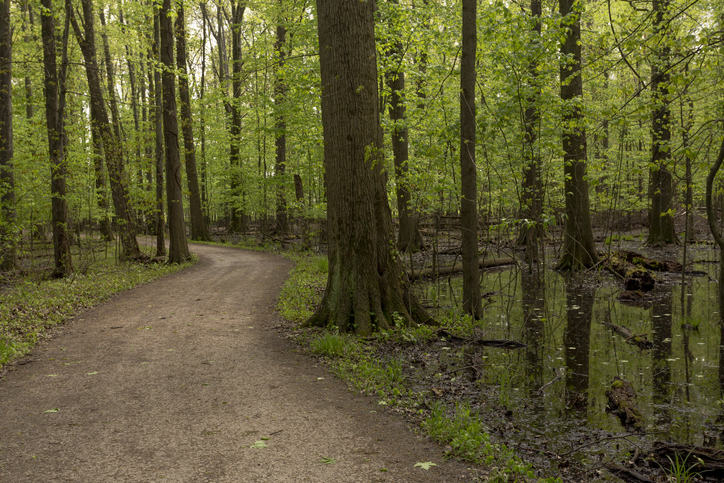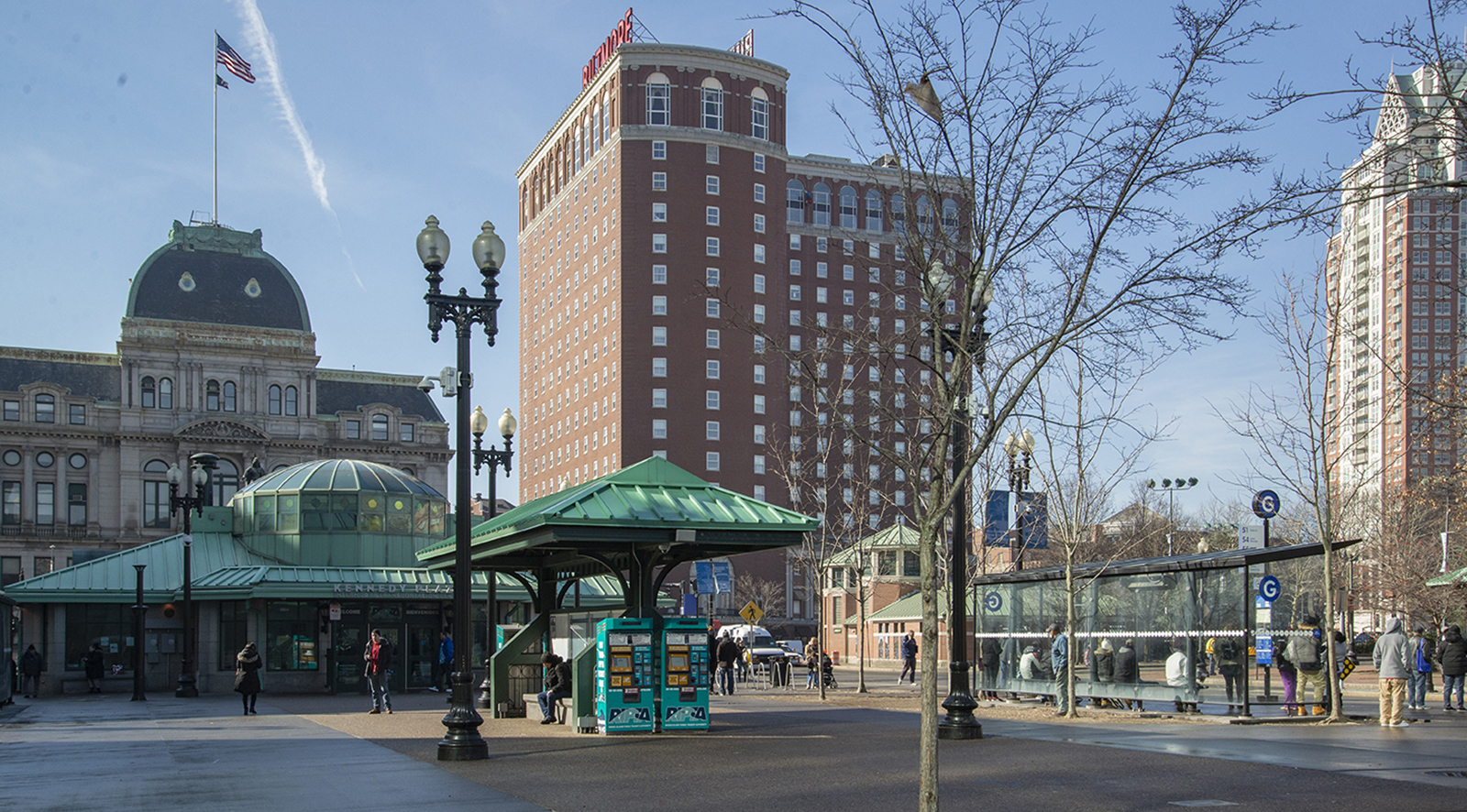Bicycling Can Be Year-Round Mode of Transportation with Some Adjustments
January 2, 2023
For the past three years, I’ve been deprogramming myself from a car-centric lifestyle and trying to remember what it was like before I had a license. This quest started a few years ago when I lost the ability to see straight, and it made me realize how much I depended on an automobile for my transportation needs.
Need a coffee? Hop in the car. Need some groceries? Get in the car. Need to go to work? Get in the car. All that changed for me in 2020 when I suffered an ischemic stroke. While I fortunately survived the ordeal, at the time, I was left cross-eyed and with a reduced visual field. As a result, I couldn’t drive a car, let alone ride a bicycle by myself.
A year after my stroke, I had surgery to straighten my vision, but the time away from driving a car gave me pause on whether to start right back up again. Instead, I started bicycling as my primary mode of transportation. I converted my mountain bike into an all-weather vehicle to haul groceries around with a big basket. I converted my gravel bike into a decently fast road bike I could use to visit my parents in Massachusetts, 60 miles away.
I even got a job with Harvest Cycle Compost collecting food scrap around Providence by bike. Since my route takes me up College Hill, the bike I use for my job has electric assist. Side note: it’s awesome.
Two years ago, I decided to attend graduate school at the University of Rhode Island. Since there’s no way I could bike down to Kingston every day, I decided to try public transit. Fortunately, RIPTA has a great paratransit service called RIde that I qualify for. You call them up a day before you need to travel and they will pick you up at your house and drop you off where you need to go. Because my classes were regular, I had a “standing order” for days I needed to be on campus. For all other trips, I rely on my WAVE card and the Transit App to know when/where a bus will be.
It’s been almost three years since former Speaker of the House Nicholas Mattiello declared, “There’s nothing the state of Rhode Island can do to address climate change that’s real or impactful,” and I fear the resignation in his words. Transportation accounts for nearly 40% of our climate emissions, and if there’s anything the state of Rhode Island can do to address climate change, it’s to rethink the choices of how we all get around.
On the local level, that means designing our streets to be more inclusive toward other forms of transit besides cars. We need to fully fund the Transit Master Plan and the Bicycle Mobility Plan. We need to continue the good work of the Great Streets Plan in Providence, which aims to create 78 miles of connected urban trails so that people can bike, rollerblade, walk, or scooter anywhere.
Some folks drive because they feel safer that way. As someone who has been hit by a car while on their bike, when a driver opened the door without realizing I was there, I understand the fear. It’s dangerous biking around. Because our state prioritizes widening highways over creating active infrastructure, the threat is ever-present, and progress is not being made fast enough to fix it. And while building separated lanes for bicycles is important, creating a culture built on bicycles is just as important. That’s why organizations like the Providence Bike Collective, Recycle-A-Bike, and Bike Newport (to name just a few) are so important to encouraging more people to hop on a bicycle. Groups such as Providence Bike Jam create healthy communities that normalize biking by hosting monthly group rides.
There are a few pieces of gear that I would recommend as well, so you can keep biking all winter long. And no, I don’t recommend a big puffy jacket. Instead, a more practical idea is to wear layers and a shell to protect yourself from the wind and the rain. But aside from that, here are five tips I have for a warmer bike ride this winter:
Get a pair of Bar Mitts and attach them to your bike. That way, you’ll always have a pair of gloves where you need them. Make sure you get the right pair depending on what kind of handlebar you have.
These gloves from Mujjo are insulated and allow you to use your touchscreen while you wear them. Combined with Bar Mitts, your hands will be toasty, no matter the temperature.
A pair of rechargeable heated socks will keep your feet warm. I go with this brand even though there are many choices and price points available. Each sock includes a little battery that connects to the sock. I charge them overnight and put them on in the morning. My only caveat is you can’t wash these socks in the washing machine so be careful. Hand wash only.
To keep your ears warm, I wear a quilted hat from Rhode Island hat-masters Ape & Bird, a two-person crew stitching out of Pawtucket. These five-panel flap caps with ear warmers are perfect for biking around because you can wear one underneath a helmet and they don’t have an annoying squatchee (that’s the button on the top of a baseball hat.) The ear warmers do their job brilliantly.
Finally, my last recommendation for staying warm while biking is to pick up a handwarmer from Ocoopa. It heats up quickly and can be used as an external battery for your phone, a handy feature I use quite a bit when the cold drains my cell phone’s battery.
Don’t let the cold be your excuse for driving instead of biking. Factoring in for cold weather can keep you biking all year-round.
Tyson Bottenus is a hauler for Harvest Cycle Compost, a board member for Bike Newport, and lives in Providence.




thanks Tyson for this excellent post with useful cold weather tips. I’d add that in decent weather, it is a joy to bicycle, and the speed of a bike is the way to enjoy spring, not that far off now. Note to further extend the range of biking, RIPTA carries regular bikes on its racks at no additional charge, also no charge for bikes on all the MBTA commuter trains except for a few weekday rush-hour trips. On weekends you can ride the entire MBTA rail system with your bike for just $10, see mbta.com
And of course a bike is much cheaper than owning and maintaining a car – in my case it made it possible for me and my wife to get along with just one car, saving a vast amount over many years. I think we’ll go out to dinner now that I think of these savings!
I’ve been using a bike for basic transportation year round for more than 45 years. I don’t bike when it’s raining or snowing or the streets aren’t clear, and now that I’m older, I don’t bike when it’s below 20 or above 75 (the range used to be below 10 or above 90). I have a large basket–what used to be called a “newsboys’ basket” on my bike. Layering is what I found best for warmth: silk long johns, wood knee socks, insulated boots, silk head scarf and a wood scarf wound around my head and neck, and skiing gloves.
I love the addition of bike lanes, but I think we really need more emphasis on, as Tyson says, building a culture built on bikes. I live near Hope Village and the vitriol generated by the experimental bike lake there has kept me away from the area altogether. The two store owners who yelled at me (separately) didn’t seem to care that bikes can create as large, if not a larger, customer base than cars (especially if we put in bike racks). Maybe we need more emphasis on this.
Bicyclists also need to stay safe. Not only have I been knocked off my bike by a car door, but recently I was hit by a truck running a stop sign at Rochambeau and Elmgrove, a notoriously dangerous intersection. I’d waited until it was legally my turn to go, not realizing that the truck behind the car wasn’t going to stop for me. So I suggest to those riders who I see weaving through traffic without regard to laws or safety that getting hit by a truck and breaking a clavicle will take you a lot longer than if you stop and let the cars go–even if, technically, you have right of way.